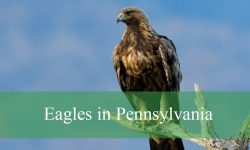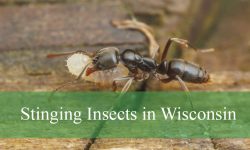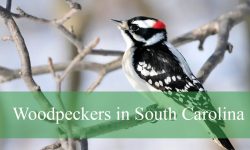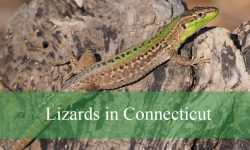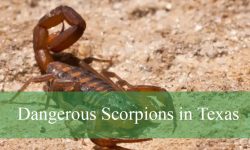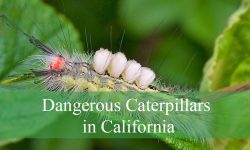If you’re exploring the skies and forests of Tennessee, you’ll notice that black birds are among the most striking and intelligent residents. From glossy, iridescent feathers to bold red shoulder patches, these birds are not only visually captivating but also fascinating in behavior.
Tennessee is home to a variety of black bird species, each with unique traits, calls, and habitats. Some, like the American Crow and Common Grackle, thrive in urban areas, while others, such as the Pileated Woodpecker and Eastern Towhee, prefer forests and wetlands. Understanding these birds helps birdwatchers and nature enthusiasts identify and appreciate them more easily.
In this guide, we’ll introduce 10 prominent black birds in Tennessee, providing detailed descriptions, identification tips, and insights into their habits. Whether you’re a beginner or an experienced birder, this overview will enhance your chances of spotting these remarkable birds in the wild.
Types of Black Birds Found in Tennessee
American Crow (Corvus brachyrhynchos)
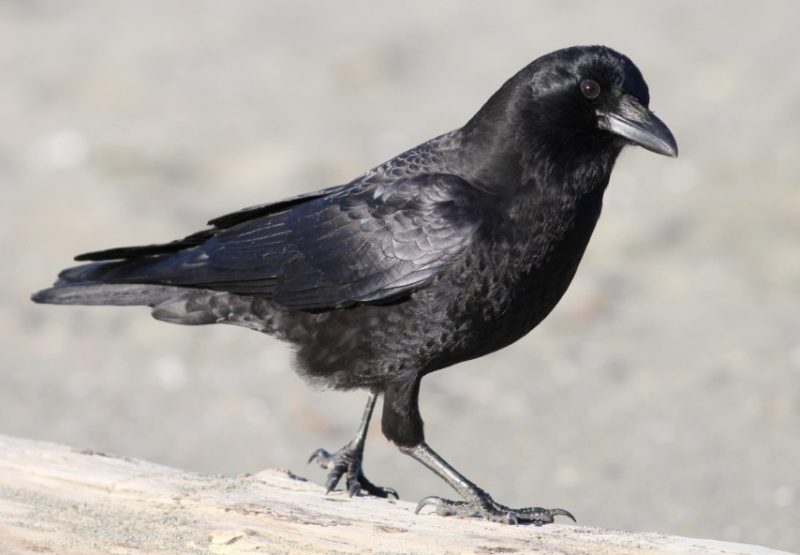
The American Crow is a large, entirely black bird with a strong, straight bill and glossy feathers that reflect hints of blue or purple in sunlight. Adults typically measure 16–21 inches in length, making them one of the most recognizable black birds in Tennessee. Their wings are broad and rounded, allowing for powerful, sustained flight, and their fan-shaped tail helps with maneuvering.
Crows are highly intelligent and known for their problem-solving abilities. They use tools, recognize human faces, and can even communicate complex information to other crows. In Tennessee, American Crows often gather in large communal roosts, especially during the winter months, creating impressive evening displays.
Habitat-wise, these birds are extremely adaptable. They thrive in forests, farmland, suburban neighborhoods, and urban areas. Crows often feed on a variety of foods, including insects, seeds, fruits, carrion, and even small animals, which makes them opportunistic omnivores.
Breeding usually occurs in spring. Crows build large stick nests in tall trees, lined with grass or other soft materials. Both parents participate in feeding and protecting the young, which fledge after about four weeks. Their loud “caw” call is unmistakable and often signals their presence across Tennessee landscapes.
Common Grackle (Quiscalus quiscula)
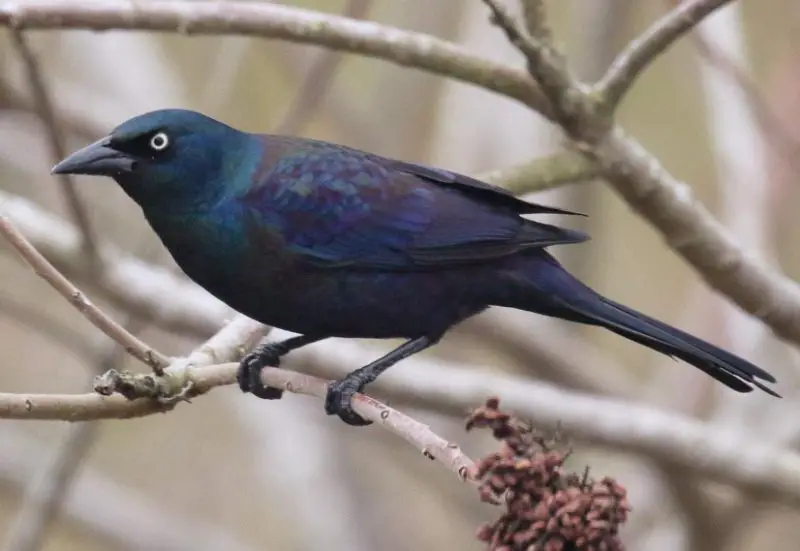
The Common Grackle is a medium-sized blackbird with long tail feathers and glossy, iridescent plumage that can appear purple, blue, or green in sunlight. Adult males are predominantly black, while females are slightly duller with brownish tones. Grackles typically measure 11–13 inches long and have a strong, pointed bill adapted for foraging in diverse habitats.
These birds are highly social and often form large flocks, especially in agricultural areas and urban parks. Their vocalizations are varied, ranging from harsh calls to metallic whistles. The Common Grackle is known for its adaptability and intelligence, often exploiting human-altered environments for food.
Habitat preferences include open woodlands, fields, wetlands, and urban settings. They feed on insects, seeds, small amphibians, and grains, sometimes even raiding crops. Their omnivorous diet allows them to thrive in a variety of Tennessee environments, from rural farmlands to city parks.
During the breeding season, males display their iridescent plumage to attract females. Nests are built in trees or shrubs, often concealed by foliage. Both parents help care for the young, which fledge in about two to three weeks. Their striking presence and loud calls make them a prominent blackbird in Tennessee.
Red-winged Blackbird (Agelaius phoeniceus)
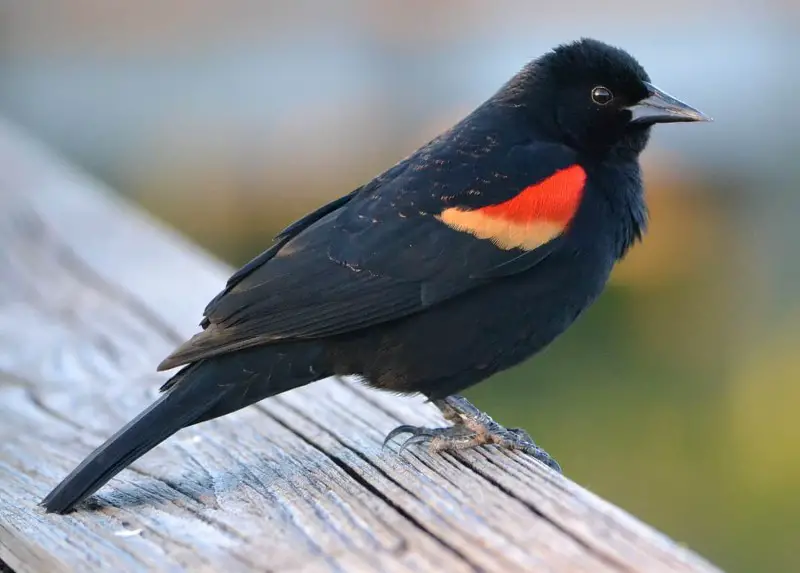
The Red-winged Blackbird is easily identified by the male’s black body with vivid red and yellow shoulder patches, called epaulets. Females are brown and heavily streaked, which helps them blend into marshy nesting areas. Adult males measure about 7–9 inches long and are slightly smaller than females, yet both sexes display strong flight abilities.
These birds are highly territorial during breeding season. Males aggressively defend their marsh or wetland territories with displays that include spreading wings and flashing their red epaulets. Their song is a recognizable “conk-la-ree” sound that carries over long distances in open habitats.
Red-winged Blackbirds are primarily found in wetlands, marshes, and fields in Tennessee. They feed on insects, seeds, and grains, often foraging on the ground or in shallow water. Outside breeding season, they may form large winter flocks, sometimes mixing with other blackbird species.
Females build cup-shaped nests in dense marsh vegetation, where they lay 3–5 eggs. Both parents contribute to feeding the chicks. Red-winged Blackbirds play a key ecological role by controlling insect populations in wetland areas, while their bright epaulets make them one of the most visually striking blackbirds in the region.
Brown-headed Cowbird (Molothrus ater)
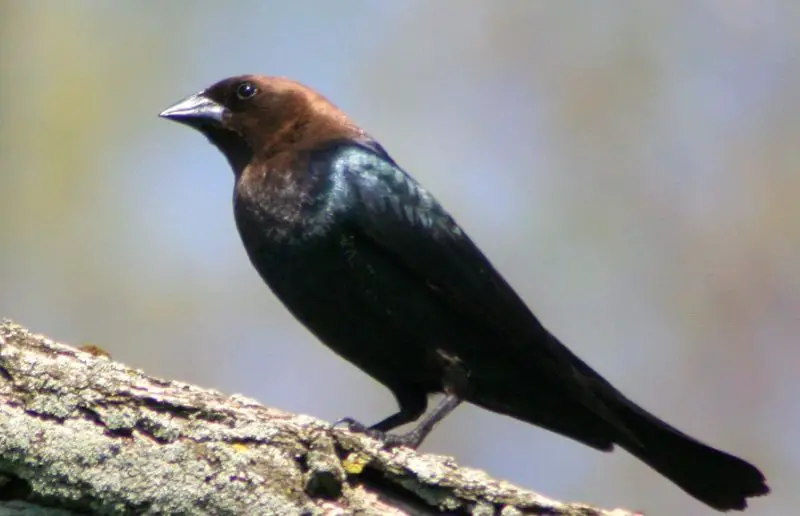
The Brown-headed Cowbird is a medium-sized blackbird with the male displaying a glossy black body and a rich brown head. Females are a dull brown color overall. Males measure around 7–9 inches long, with a short, conical bill adapted for seed and insect consumption. Their coloration and compact build distinguish them from other Tennessee blackbirds.
Cowbirds are brood parasites, meaning they lay their eggs in the nests of other bird species, leaving host birds to raise their chicks. This unique reproductive strategy allows cowbirds to conserve energy on parental care while still producing numerous offspring. Host species may include sparrows, warblers, and other small passerines.
Habitat-wise, Brown-headed Cowbirds thrive in open areas, including pastures, farmland, and woodland edges. They feed on seeds, grains, and insects, often foraging on the ground. They are highly social and frequently form flocks, sometimes mixing with other blackbirds during non-breeding months.
During the breeding season, males exhibit courtship displays such as puffing their chest and spreading wings while singing. Their presence is often noticed by their sharp, bubbly calls. Despite their parasitic behavior, cowbirds are an integral part of Tennessee’s blackbird community, contributing to the dynamic interactions within local ecosystems.
European Starling (Sturnus vulgaris)

The European Starling is a medium-sized blackbird with iridescent feathers that reflect green, purple, and blue hues in sunlight. In winter, the plumage is speckled with white spots. Adults are about 8–9 inches long with a sharp, pointed yellow bill. Their robust, compact body makes them highly versatile in flight and ground foraging.
These birds are extremely adaptable and highly invasive, introduced to North America in the late 19th century. They thrive in urban, suburban, and rural environments across Tennessee, often forming massive flocks that can create dramatic murmurations in the sky.
European Starlings are omnivorous, feeding on insects, fruits, seeds, and human food scraps. Their versatility allows them to exploit almost any available food source. They often compete with native birds for nesting cavities, which has ecological impacts on local species.
During breeding season, starlings nest in tree cavities, buildings, or nest boxes. Both parents feed the young, which fledge in about three weeks. Known for their mimicry, starlings can imitate sounds from other birds, animals, and even human-made noises, making them one of the most vocal and intriguing blackbirds in Tennessee.
Common Raven (Corvus corax)
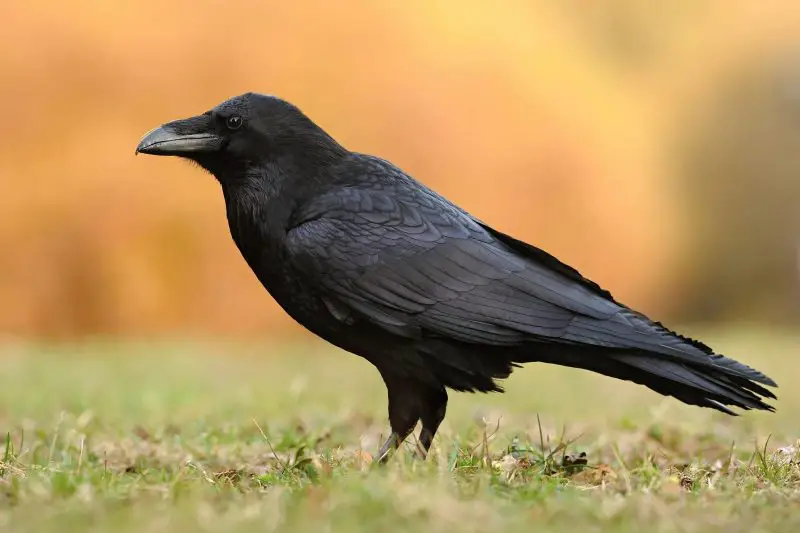
The Common Raven is one of the largest black birds in Tennessee, with adults measuring 24–27 inches long and wingspans up to 4 feet. Their glossy black feathers often have a bluish or purplish sheen in sunlight, and they possess thick, powerful bills and shaggy throat feathers. Ravens are larger and bulkier than crows, making them unmistakable in flight.
Ravens are highly intelligent birds, capable of problem-solving, using tools, and remembering food locations for extended periods. They are also known for complex vocalizations, including a wide range of croaks, clicks, and mimicry of other sounds. Ravens often exhibit playful behaviors such as aerial acrobatics and sliding down snow-covered roofs.
Habitat for Common Ravens in Tennessee includes forests, mountains, and remote rural areas. They prefer areas with cliffs or tall trees for nesting. Ravens are omnivorous, feeding on carrion, small animals, insects, grains, and occasionally human food scraps. Their adaptability allows them to survive in both wild and human-altered landscapes.
Breeding pairs build large stick nests in tall trees or on cliffs, lined with softer materials. Ravens are monogamous, with both parents actively caring for the young, which fledge after about 5–6 weeks. Their intelligence, size, and distinctive deep calls make the Common Raven a remarkable and easily recognized black bird in Tennessee.
Pileated Woodpecker (Dryocopus pileatus)
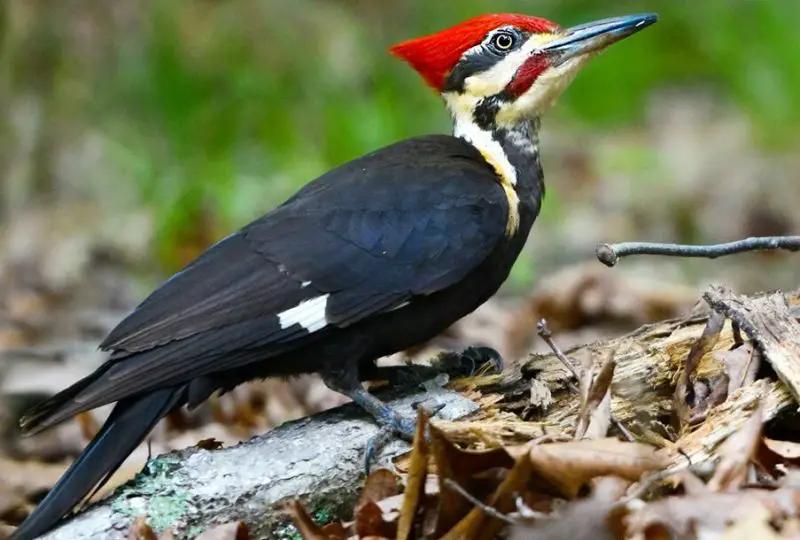
The Pileated Woodpecker is a striking black bird with a prominent red crest and white underwing patches. Adults measure 16–19 inches in length, making them one of the largest woodpeckers in Tennessee. Their strong chisel-like bill allows them to excavate large cavities in trees while foraging for insects, especially carpenter ants.
These woodpeckers are primarily solitary or found in pairs, often heard before seen due to their loud, resonant drumming on dead trees. Their calls are a distinctive series of loud, high-pitched “wuk” or “kuk” notes that echo through forested areas. The Pileated Woodpecker’s territorial behavior ensures that it defends its feeding grounds against other woodpeckers.
Habitat preferences include mature forests, particularly deciduous or mixed woods with large standing dead trees. They forage by excavating rectangular holes in bark to access insects hidden beneath. Occasionally, they also consume fruits and nuts, supplementing their insect-rich diet.
Nesting involves creating deep cavities in tree trunks, where females lay 3–5 eggs. Both parents participate in incubation and feeding of chicks. Pileated Woodpeckers play an essential ecological role by creating cavities that later serve as nesting sites for other birds and small mammals, highlighting their importance in Tennessee forests.
Eastern Towhee (Pipilo erythrophthalmus)
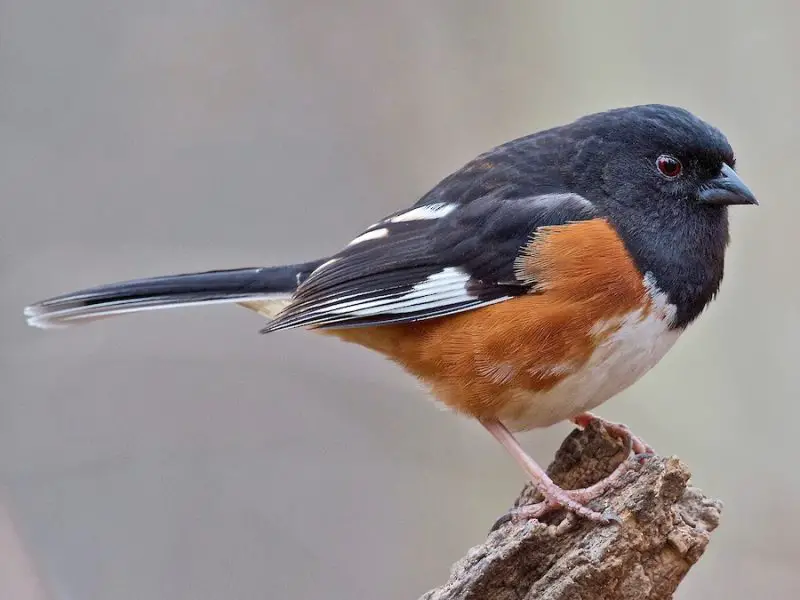
The Eastern Towhee is a medium-sized blackbird with a striking contrast of black upperparts, white belly, and rich rufous sides. Males have these bold colors, while females show brownish tones instead of black. Adults are 7–8 inches long, with strong legs suited for scratching leaf litter in search of food.
Towhees are known for their distinctive foraging behavior called “double-scratching,” where they hop backward to uncover seeds, insects, and other invertebrates. Their song is a clear “drink-your-tea” whistle, often heard at forest edges and shrubby areas. They are secretive birds, often staying low in dense vegetation to avoid predators.
Habitat for Eastern Towhees in Tennessee includes woodland edges, overgrown fields, and shrubby areas. They feed primarily on seeds and insects, supplemented by fruits during the summer and fall. Towhees are generally solitary or found in pairs outside the breeding season.
Breeding involves building a cup-shaped nest on or near the ground in dense vegetation. Females lay 2–5 eggs, and both parents help feed the young. Their striking coloration, foraging style, and melodic song make Eastern Towhees a favorite for birdwatchers in Tennessee.
Black Vulture (Coragyps atratus)
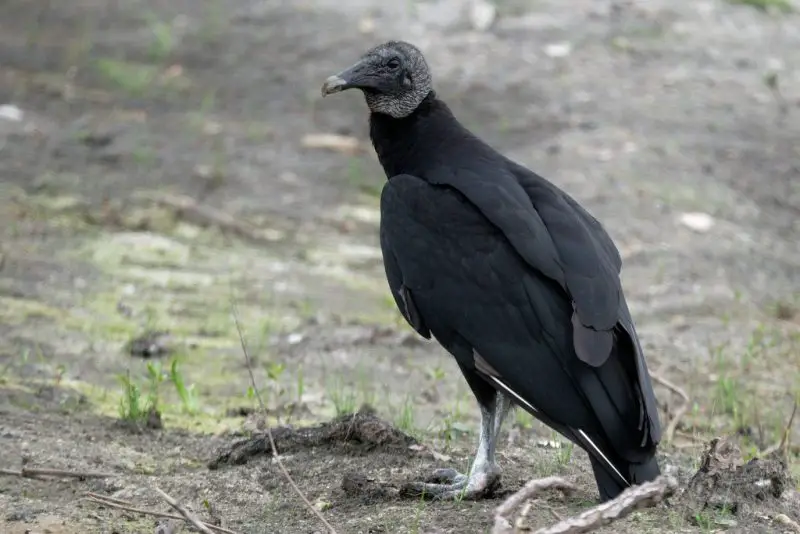
The Black Vulture is a large, all-black raptor with a featherless black head and broad wings. Adults measure 24–27 inches in length with a wingspan of 5–6 feet, making them easily identifiable in Tennessee skies. Their short tail and broad, square-shaped wings help them soar effortlessly while searching for carrion.
These vultures are scavengers, primarily feeding on dead animals. They play a vital ecological role by cleaning up carcasses and reducing the spread of disease. Black Vultures often soar in groups, using thermals to conserve energy while traveling long distances in search of food.
Habitat includes open fields, forests, roadways, and landfills. They roost in tall trees or on cliff ledges and are highly social, often forming communal roosts. Black Vultures rely on their keen eyesight to locate carrion rather than smell, unlike some other scavenger species.
Breeding occurs in secluded areas such as hollow trees, cliffs, or abandoned buildings. Females typically lay 1–3 eggs, which are incubated by both parents. Their large size, dark plumage, and soaring behavior make Black Vultures unmistakable and important members of Tennessee’s black bird population.
Great-tailed Grackle (Quiscalus mexicanus)
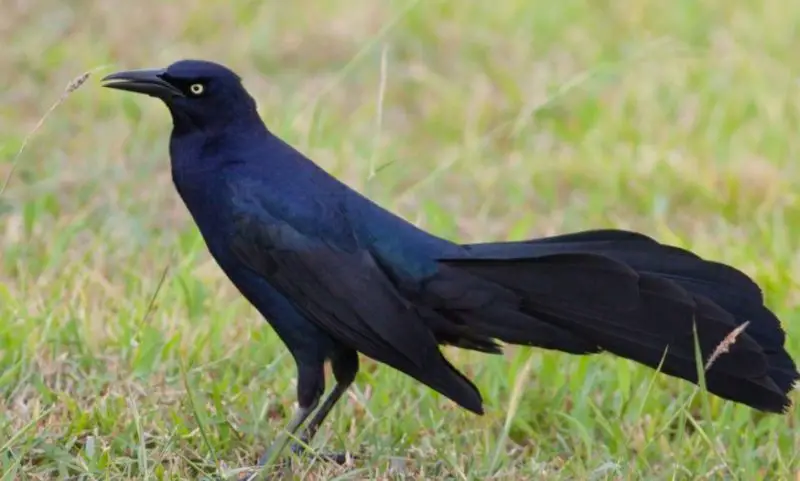
The Great-tailed Grackle is a large, striking blackbird known for its glossy, iridescent black plumage in males, which may reflect shades of purple, blue, or green in sunlight. Females are smaller and brown, providing a strong visual contrast. Adults measure 16–20 inches in length, with males having long, keel-shaped tails that are often fanned during displays, making them highly conspicuous in Tennessee habitats.
These birds are highly social and gregarious, often forming large flocks, especially near water sources or urban areas. Their calls are varied, including harsh squawks, whistles, and rattles, which they use to communicate within groups. Males frequently perform dramatic displays, spreading their wings and raising their tails to attract females and assert dominance over rivals.
Habitat for Great-tailed Grackles includes open woodlands, marshes, agricultural fields, and city parks. They are highly adaptable, feeding on insects, grains, fruits, and human food scraps. This opportunistic diet and their bold behavior allow them to thrive in both rural and urban Tennessee environments.
Breeding involves males establishing territories in colonies near water, where females build nests in trees, shrubs, or reeds. Females lay 3–5 eggs, and both parents contribute to feeding the chicks. The Great-tailed Grackle’s striking appearance, loud vocalizations, and social behavior make it a highly noticeable and ecologically important blackbird in Tennessee.
Best Time and Places to Observe Black Birds in Tennessee
Observing black birds in Tennessee can be a rewarding experience, especially when you know the optimal seasons and habitats for each species.
Best Time to Observe
The ideal time for birdwatching varies by species. In spring, from March to May, many blackbirds such as Red-winged Blackbirds and Brown-headed Cowbirds are most active during the breeding season. Male birds display their plumage and sing frequently, making them easier to spot.
Summer, from June to August, is ideal for viewing juveniles. Pileated Woodpeckers and Eastern Towhees become more visible along forest edges, and bird activity remains high throughout the day.
In fall, from September to November, large flocks of American Crows, Common Grackles, and European Starlings gather before migration, creating spectacular aerial displays. Winter, from December to February, is perfect for observing communal roosts of crows and starlings in urban and rural areas. Black Vultures and Great-tailed Grackles remain fairly visible year-round, especially in southern Tennessee.
Best Places to Observe
The best places to observe black birds vary by habitat preference. Wetlands and marshes, such as Reelfoot Lake or Chickasaw State Park, are ideal for Red-winged Blackbirds and Great-tailed Grackles.
Mature forests and wooded areas attract Pileated Woodpeckers, Eastern Towhees, and Common Ravens. These birds are often found near forest edges, streams, and large tracts of unfragmented woodland.
Urban and suburban environments are home to American Crows, European Starlings, and Common Grackles. They often frequent parks, gardens, and parking lots, showing remarkable adaptability to human presence.
Open fields and farmlands, like those in the Cumberland Plateau region, are excellent for spotting Brown-headed Cowbirds, Common Grackles, and American Crows as they forage for insects, grains, and seeds.
FAQs About Black Birds in Tennessee
What are the most common black birds in Tennessee?
The most commonly seen black birds include American Crows, Common Grackles, Red-winged Blackbirds, Brown-headed Cowbirds, and European Starlings.
How can I identify male vs female blackbirds?
Males typically have more vibrant or glossy plumage, such as red shoulder patches on Red-winged Blackbirds or iridescent feathers on Common Grackles. Females are usually duller brown or streaked, which helps them blend into nesting areas.
Are black birds in Tennessee migratory?
Some species, like Red-winged Blackbirds and Brown-headed Cowbirds, migrate seasonally. Others, such as American Crows, Common Grackles, and Black Vultures, are largely resident and can be observed year-round.
What is the best time of day to see black birds?
Early morning and late afternoon are the best times. Birds are most active during these periods, feeding, calling, and displaying behaviors that make them easier to observe.
Are black birds in Tennessee dangerous?
Black birds are generally not dangerous to humans. Some species, like Black Vultures, may be protective of nests, and large flocks of starlings or crows can be noisy, but none pose a real threat.

